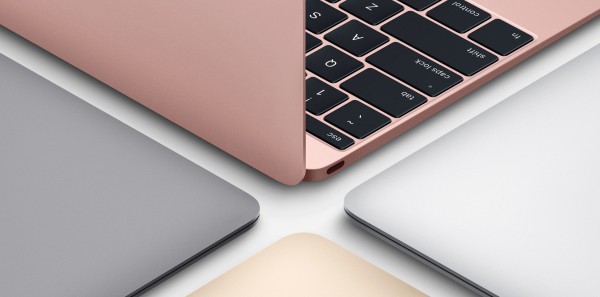12-inch MacBook's three flaws that Apple could've fixed but didn't

Earlier this week, Apple finally updated its svelte laptop that launched 13-months ago. I am awe-struck by the company's design-audacity—not for brash innovation but bumbling compromises that make me wonder who needs this thing. The 12-inch MacBook offers much, wth respect to thinness, lightness, and typing experience (the keyboard is clever tech). But baffling is the decision to keep the crappy 480p webcam. These days, not late-1990s state-of-art, 720p is the least a pricey computer should come with, and is it too much to ask for 1080p or 4K when modern smartphones can shoot just that?
This shortcoming, and two others, glares because the little laptop otherwise offers so much, for its size. Thickness is 13.1mm, while weight is 2.03 pounds (.92 kilograms). The 12-inch IPS display delvers 2304 x 1440 resolution at 226 pixels per inch. This thing is tiny: 28.05 by 19.65 centimeters (11.04 by 7.74 inches). Apple's redesigned keyboard provides surprising travel, given the keys' shallowness. By these measures, MacBook is a great carry-along.
I seriously considered buying this beauty a year ago, but the webcam was a deal-breaker. I don't record video on a laptop every day, or even every week. But the occasional need demands something that won't make me look pixelated when the recipient appears in glorious HD. Forget YouTubing with the webcam. Of all the upgrades I expected most for the refresh, higher-res webcam topped the list.
On this Earth Day, I don't just feel Crab Apple about the low-res webcam. The Intel Core M processor upgrade is another gripe. Granted, MacBook packs the new Skylake chips running at 1.1GHz or 1.2GHz (or whopping 1.3GHz built to order). M-class chips, for all their low-power-consumption benefits aren't super high performance. Some cheap-selling Chromebooks could achieve as much perceived oomph or much more for much less money spent. Eh, how's spending $300 instead of $1.300?
If any laptop begs for Apple's own A-class chips, 12-inch MacBook is it. Yes, the processor change would disrupt the market by compelling developers to adapt apps, as might be the case going to, say, A9X processor. Lower-volume-selling product is the way to start, preparing the ecosystem for chip changes across the laptop line.
Presumably, many—if not most—MacBook buyers already expect to make trade-offs. Small laptop like this is very much compromise computing. Let these buyers endure a little more pain for greater performance rewards. I can say from using 12.9-inch iPad Pro with A9X and 4GB RAM, that performance feels fast as 13.3-inch MacBook Pro with Retina Display. Time is long past to see Apple inside rather than Intel.
Strangely, I am less bothered by the single USB Type-C port that has some other critics in a tizzy. That said, two of these things would be better, so that someone can charge and use peripherals at the same time. You've spent a long day out in the field shooting (with a real camera) and editing footage of Spring-time moose matings. Battery is dying, but you must offload footage to an external drive. You've got a car adapter for electric, but topping off the laptop's battery prevents you from using any wired peripherals. Given the usage scenarios that the little laptop fits (for performance and portability), scenario like this is to be expected.
I waited a few days post-announcement—to let my emotional dismay dissipate before commenting on 12-inch MacBook. With cooler head, I see the same three problems. If you bought the little laptop last year or plan on buying the refreshed config, other readers surely would like to know why and how MacBook benefits you. So, please, share with the class.
